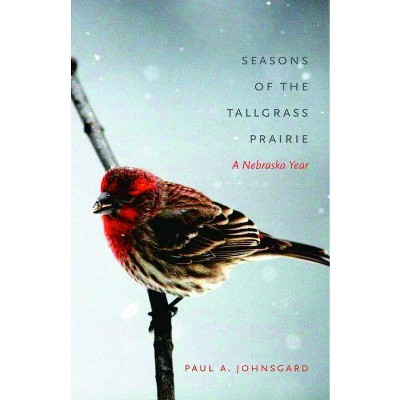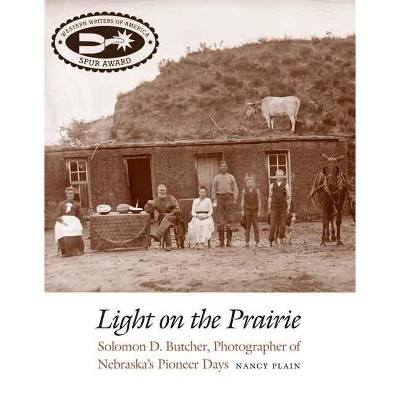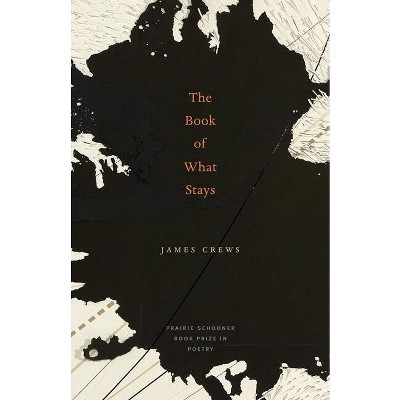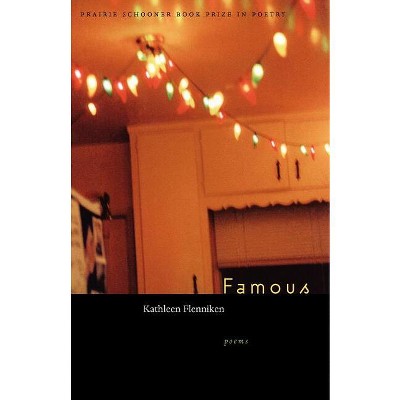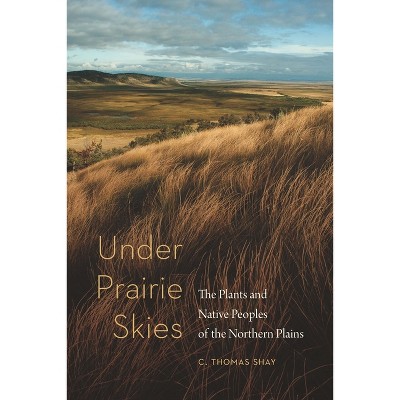Sponsored

The Last Prairie - by Stephen R Jones (Paperback)
In Stock
Sponsored
About this item
Highlights
- The Nebraska Sandhills are the largest remaining relic of the majestic prairies that once extended from the Missouri River to the Rocky Mountains.
- About the Author: Stephen R. Jones is the coauthor of Colorado Nature Almanac and The Shortgrass Prairie.
- 244 Pages
- Nature, Essays
Description
About the Book
The co-author of "The Shortgrass Prairie" paints a startlingly vivid portrait of the Nebraska Sandhills as he delivers riveting accounts of the flora, fauna, wildlife, and rich cultural history of the region.Book Synopsis
The Nebraska Sandhills are the largest remaining relic of the majestic prairies that once extended from the Missouri River to the Rocky Mountains. This vast but fragile expanse comes to life in The Last Prairie, a collection of twenty essays by Stephen R. Jones ranging from fascinating descriptions of dancing prairie-chickens, courting fireflies, and the annual migratory flight of a half-million sandhill cranes to equally vivid accounts of trailblazing homesteaders, range wars, and devastating storms. The Last Prairie is both a paean and an elegy for a place where you can walk for miles through shoulder-high grass or sit on a hill for hours with only the cry of the curlew and the hiss of the wind for company--a place Jones sought for decades and for whose survival he now fears. The author's vast historical canvas lends a rare perspective and urgency to the book's discussion of recent efforts to save the Niobrara River from dams and developers. Jones speaks eloquently to such timeless themes as humanity's search for community and the ties that bind us with nature. Infused with quiet pathos and vibrant imagery, The Last Prairie is a triumph of the essayist's art.From the Back Cover
""Recently I stood on a wind-sculpted ridge with a friend, a Native American holy man, admiring the surrounding countryside and reflecting on its hypnotic appeal. 'The Sandhills, ' he said, 'is the most sacred of all places. It's where our spirit goes to rest when we die.' As we stood there with the wind whipping through our hair and nothing visible but grass, water, and sky, I knew his words were true."--Stephen R. JonesIt is a region that has long captivated and inspired travelers, writers, and artists. Celebrated as one of the most visually stunning of American landscapes, it is the largest remaining relic of the majestic prairies that once extended from the Missouri River to the Rocky Mountains. Now this vast but fragile expanse known as the Nebraska Sandhills comes to life in an unforgettable collection of essays by naturalist and author Stephen R. Jones.
Evocative, insightful, and melancholy, the twenty essays in "The Last Prairie limn the essence of life in the Sandhills. Fascinating descriptions of dancing prairie-chickens, courting fireflies, and the annual migratory flight of a half-million sandhill cranes stand alongside equally vivid accounts of trailblazing homesteaders, range wars, and devastating storms. "The Last Prairie is both paean and elegy for a place where you can walk for miles through shoulder-high grass or sit on a hill for hours with only the cry of the curlew and the hiss of the wind for company--a place Jones sought for decades and for whose survival he now fears.
The author's vast historical canvas lends a rare perspective and urgency to the book's discussion of recent efforts to save the Niobrara River from dams and developers. And in depictingthe life of the Plains Indians, including the nature of their cosmology and their doomed resistance to the encroachments of white settlers, Jones speaks eloquently to such timeless themes as humanity's search for community and the ties that bind us with nature. Infused with quiet pathos and vibrant imagery, "The Last Prairie is a triumph of the essayist's art.
In graceful, pitch-perfect language, an award-winning environmentalist renders a startlingly vivid portrait of life in the Nebraska Sandhills.
Praise for "The Last Prairie
"A must-read book."--Jonis Agee, author of "Strange Angels and "The Weight of Dreams
"A lovely book, to enjoy and cherish."--Ann H. Zwinger, author of "The Nearsighted Naturalist, Beyond the Aspen Grove, and "Land Above the Trees
"From insect to eagle's-eye view, "The Last Prairie gives us the heartening illuminations of a writer honoring his chosen cut of the continent with loyal affection and full, gifted attention."--Merrill Gilfillan, PEN Martha Award- and Western Book Awardwinning author of "Magpie Rising and "Chokecherry Places
"This book is a celebration of place by a man who truly loves it, walks it, and is willing to work hard enough to bring it home to readers and place it in our hearts."--Christina Nealson, author of "Living on the Spine: A Woman's Life in the Sangre de Cristo Mountains
Review Quotes
"Reading this book is as pleasant an experience as actually viewing the tall, gently waving prairie grasses and pastoral scenes that Jones describes."--Library Journal
"[A] gem of Great Plains environmental writing. Stephen Jones has given us a collection of his undated journal entries that represent an interesting combination of nature writing, history, and anecdote. . . . The strength of this work for this reviewer is its acknowledgment and investigation of the intimacy indigenous peoples had with this environment. One finds the footprints of Mari Sandoz, Aldo Leopold, and John Neihardt in this must-read for Sandhills enthusiasts. As Jones's own 'love song to the plains, ' The Last Prairie captures the region's rich history with a depth often overlooked in other writings on the Great Plains."--Douglas Harvey, Journal of the West-- (10/26/2006 12:00:00 AM)
"Jones does a remarkable job of capturing the variety, texture, and integrity of the Sandhills environment--including the plant and animal life as well as the ranching community and the historical fabric that work to create this complicated landscape. . . . An interesting contribution to the field of nature writing in several respects. First, it richly describes a region of the United States that few people might be familiar with. Second, it works to show how landscape, wildlife, culture, and history are always interconnected. In his introduction, Jones writes, 'the grass around me, the limber pines, the clams and 80-million-year-old ocean that spawned them, and I were all made from the same stuff, our lives woven together by the same currents of time and place.' Finally, the book works to make a compelling argument that because of human dependence upon and connection to landscape and all lie, regions like the Sandhills deserve consideration and preservation."--Sarah Hulme Hill, Western American Literature
-- (5/14/2007 12:00:00 AM)
About the Author
Stephen R. Jones is the coauthor of Colorado Nature Almanac and The Shortgrass Prairie. Named by the National Wildlife Federation as one of ten "volunteers who make a difference," Jones works as a teacher and environmental consultant in breeding-bird ecology.Shipping details
Return details
Trending Non-Fiction






